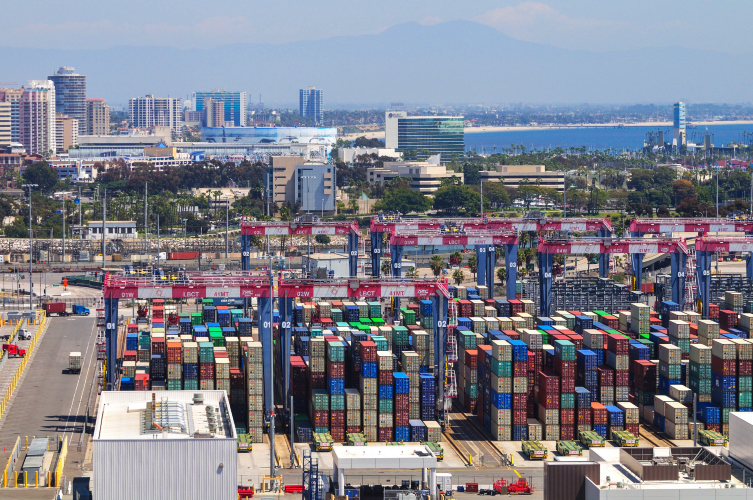
The $1.49 billion project — nearly 11 years in the works — combined the port’s Pier F and Pier E terminals into a contiguous, 304-acre Long Beach Container Terminal.
The redevelopment provides the port with 3.5 million twenty-foot equivalent units of cargo capacity.
“If you look at that terminal alone … right now (it would) be the sixth-largest port in the United States,” Port of Long Beach Executive Director Mario Cordero said during a video press conference on Aug. 5. “We’ve electrified cargo movement operations from ship to container stacks. Longshore workers have been retrained to operate the control center and provide maintenance on the new machines.”
The terminal is “an environmental model with 100% shore power for ships, optimized rail yards to minimize truck trips, and solar panels on parking lots, and the LEED gold (certified) buildings and of course the zero emission operations,” Cordero added.
The port’s harbor commissioners approved the project in 2009. Construction of the first phase started in 2011 and was completed by 2016, with the terminal welcoming its first ship. By 2017, the project’s second phase was done, and in June, the terminal reached substantial completion of the third and final phase.
The terminal is coming online as the ubiquitous surge in cargo volume at the local ports becomes the new normal.
“We’re going to move about 19 million TEUs this year at the San Pedro Bay complex, (and) I don’t see that number diminishing in the years to come. In fact, that number is going to increase, so I think we need to start thinking of how we operate for the model of tomorrow as opposed to operating these kind of volumes with the models of yesterday,” Cordero said.
The director added that he wants the port to adopt an “Amazon state-of-mind” and move containers out of the terminal as quickly as possible and extend gate time to quell bottlenecks and truck turn time congestion.
Record cargo volume moved in July by dockworkers and terminal operators support Cordero’s outlook.
The port processed 784,845 TEUs last month, up 4.2% from the same month in 2020 — its best July on record. Imports were up 1.6% to 382,940 TEUs, while exports decreased 20.7% to 109,951. The volume of empty containers headed back overseas jumped 22.8% to 291,955 TEUs.
July marks the 12th time the Port of Long Beach has broken monthly cargo records in last 13 months. Through July, the Port has processed 5,538,673 TEUs of cargo, a 32.3% increase over the first seven months of 2020.
“The record volume of cargo is driven by a surge in imports,” Cordero said. “Consumer spending started increasing in 2020, and lately it has slowed down a bit. Still, home exercise equipment, new appliances and other goods are in high demand even as spending on services starts to increase. We foresee that shippers will need to move high volumes to accommodate consumer demand for imports.”
The port has taken “several protective measures” to help keep cargo flowing, Cordero added, including construction of the Gerald Desmond Bridge, which will soon be renamed the Long Beach International Gateway Bridge, that “dramatically improved” access for truckers and is “not prone to shutdowns or backups.”
He also mentioned using an empty plot of land as a short-term overflow container yard.
